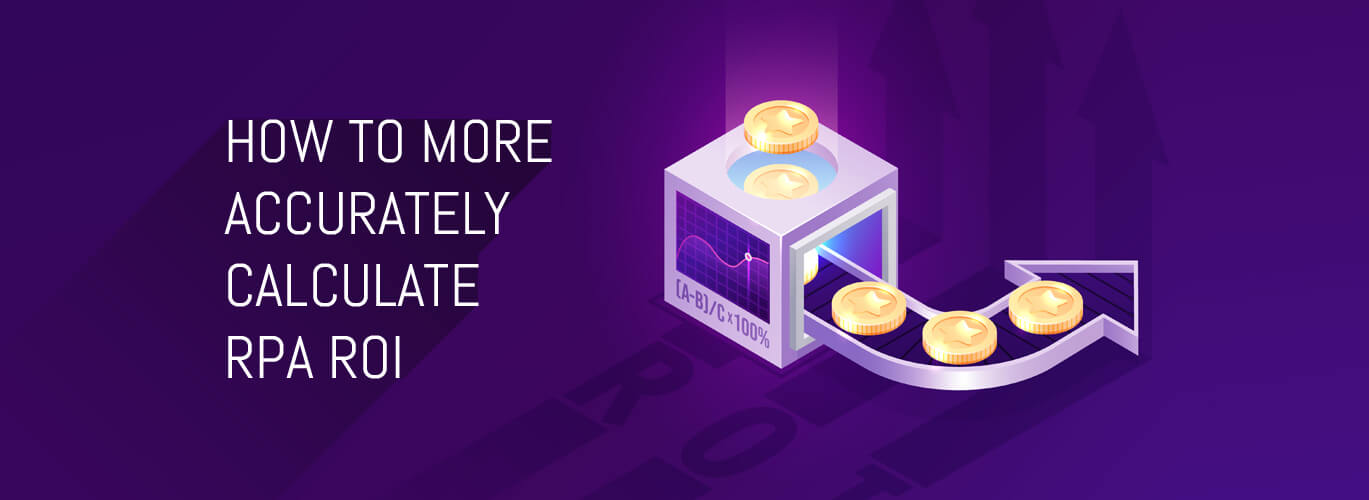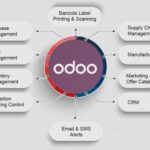Let us take you through all those different RPA ROI metrics that will help you in calculating ROI in RPA projects. But before jumping into the key topic, let us first understand about the world of robotic process automation to gain better insights into the subject.
What is RPA?
RPA is the software technology that performs transactional activities in IT applications in the way a user would. All RPA applications have the following structure: a digital input of structured data and a process logic based on rules conditions, loops etc. to act on the data receipt. A software robot has the great advantage of being much faster than a human when carrying out tasks.
Now let’s move on to calculating RPA and ROI
Measuring the costThis is done as it consists of four basic, quantifiable things:
- The cost of the RPA solution adds up subscription, licensing, maintenance, etc.
- Extra infrastructure cost (the cost of the hardware, software, and networking infrastructure required to support the RPA solution)
- Development cost (the cost of development tools plus the time of developers, business analysts, and users to analyse, redesign, and automate the process or processes in question)
- Ongoing maintenance cost (add up the time of personnel needed to monitor and maintain the RPA software multiplied by their fully loaded cost to your business)
This takes attention to detail, but it must be done.
Measuring the return
Measuring the return is more challenging because of the intangible benefits RPA provides.
Let’s take an example of a hard financial return: you saved the equivalent of one full-time employee’s (FTE’s) time for a year by automating a business process. You calculate the dollar value of that return by finding out the “fully loaded” annual cost of an FTE (fully loaded means including benefits, taxes, retirement plans, and all other costs). There you have it: $50,000. Or $100,000. Or anything.
Here’s an example of an intangible return: Your employees may be happier as they’ve gotten rid of heavy work and are free to do higher-value work.
Measure Intangible Benefits
Implementing Robotic Process Automation services proves beneficial to companies in different ways. A lot of benefits may be difficult to quantify but can be analysed accurately with a thoughtful study.
Employee Satisfaction
Are your employees happy? Is automation bringing a positive change in their work? Running a survey can give you superior insights. Monitor employee turnover rate as well. If it comes down as compared to pre-automation employee turnover data then it suggests a positive change for employees.
Customer Experience
Ask for surveys, take their feedback, and check sales reports post-automation. A positive viewpoint on these reflects that automation helped you deliver products/services of better quality.
Business Agility
Look what all progresses a company made post automation roll-out that was desired according to the market demand.
Increased Compliance
Robotic Process Automation assists enterprises to deliver products/services while meeting required rules and regulations according to the industry standards. Clearance from regulatory bodies confirms the benefit of a product and cements the authority for extraordinary compliance management.
Reduced Dependence
Robotic Process Automation bots can manage rule-based tasks in a very systematic manner. You do not have to fully rely on humans to run tremendous, time-consuming, and highly repetitive tasks.
Calculating your ROI has many advantages
You will surely find that implementing RPA offers massive benefits to your customers, your employees, and your business. You probably thought about that. But it’s nice to have confirmation in solid numbers.
You will require sound statistics and proof to evangelise RPA. Also, you will also need to know what’s working and what’s not in your RPA initiative. It doesn’t matter if you’re pleasantly surprised or disappointed in the ROI measures you calculate, you’ll have valuable data that you can use going forward to enhance the program.
So, are you looking forward to saving money and time on your business operations? Are many of your business processes repetitive, rule-based and flow at high volumes? Do you need to use your employees for more valuable tasks to find the quality of your outputs? If your answer is yes to any or all of these questions, your enterprise may be a great candidate for robotic process automation.






